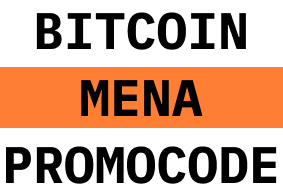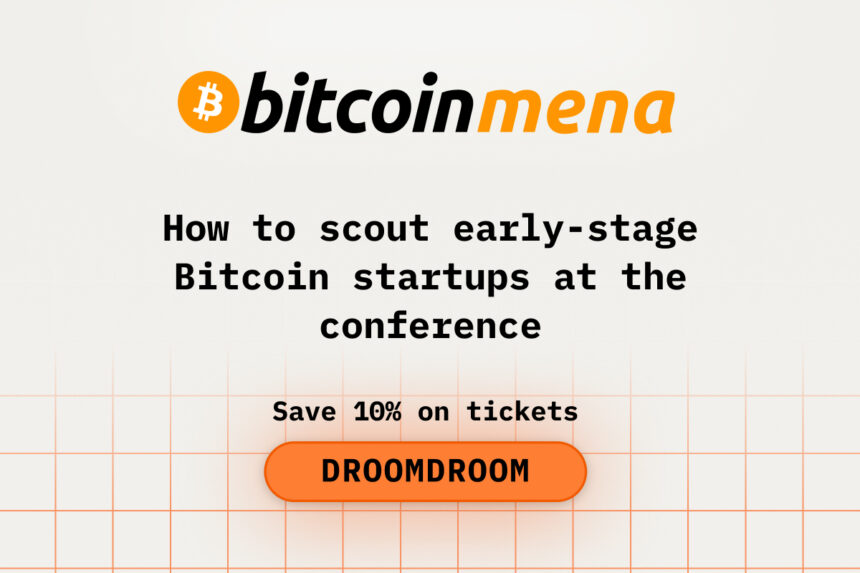Bitcoin MENA offers a dynamic stage for investors, builders, and founders to spot emerging startups before they hit mainstream traction. Early-stage Bitcoin startups are especially interesting: they often bring novel infrastructure ideas, protocol innovations, or new service models tailored to regional demand. But with hundreds of ventures across technology and fintech in MENA, effective scouting relies on strategy, insight, and clarity. Whether you’re a VC, accelerator manager, or partner looking to discover the next wave, here’s how to find up-and-coming Bitcoin ventures at the conference. And if you haven’t registered yet, here’s a way to make your attendance more affordable:
- Understand the Ecosystem Landscape in MENA
- Set Clear Criteria for Early-Stage Signals
- Use Conference Programming to Your Advantage
- Talk to Founders and Ask Deep Questions
- Observe Non-Financial Traction
- Use Social & Side Events for Hidden Gems
- Follow Up with Specificity & Value
- Weigh Risk vs Reward
- Conclusion
Book your Bitcoin MENA ticket at a 10% discount by entering the official promo code DROOMDROOM.
Understand the Ecosystem Landscape in MENA
Before stepping into Bitcoin MENA, it’s helpful to grasp some regional startup statistics. There are over 10,000 tech startups in MENA, roughly 480 of them in the crypto sector, with many in pre-seed stages. About half of all tech startups across MENA are pre-seed, and crypto startups make up about 15% of viable tech ventures, especially when filtering out non-tech companies.
Knowing that many startups are very early means your scouting framework should account for minimal traction but strong technical fundamentals.
Set Clear Criteria for Early-Stage Signals
To wade through many early startups, you need a checklist of signals that matter. Key traits to look for include:
- Founders with prior open-source or cryptography / protocol experience
- Minimal viable product (MVP) or demonstrable prototype rather than just an idea
- Engagement with technical communities (GitHub commits, testnet users, developer feedback)
- A roadmap that addresses Bitcoin-specific challenges (scaling, privacy, fee markets)
- Transparent thinking about regulatory, compliance, or regional adaptation
These criteria help distinguish startups that are more than just buzz—they show readiness or potential to build.
Purchase your Bitcoin MENA ticket now and save 10% with the official promo code DROOMDROOM.
Use Conference Programming to Your Advantage
Bitcoin MENA’s agenda will include pitch sessions, demo booths, open-source labs, and workshops. These are prime discovery zones. For example, startup pitch competitions often showcase early-stage Bitcoin or crypto-based projects. Demo areas allow seeing working software or hardware. Workshops and breakout labs give insight into how teams think, solve problems, and respond to technical constraints.
When you study the schedule ahead of time, you can allocate time to startup-heavy sessions and demo halls where early-stage Bitcoin work is showcased.
Talk to Founders and Ask Deep Questions
What separates the promising from the rest often comes down to the kind of questions founders ask you—and those you ask them. Some good conversation starters:
- What is your current user or tester base? (Even internal testers count.)
- How have you secured your code or protocol? What audits, peer reviews, or community trust have you built?
- How do you plan to scale in cost, performance, and regulatory compliance in the MENA region?
- What dependencies or external risks do you have (e.g., node software, protocols, infrastructure)?
- How resilient is your system to Bitcoin network changes (fee volatility, mempool congestion, consensus updates)?
These questions will help you evaluate not just the idea but the team’s technical sophistication and risk awareness.
Enjoy 10% savings on Bitcoin MENA tickets by applying the official promo code DROOMDROOM.
Observe Non-Financial Traction
Since many early startups may not yet have revenues, track other forms of traction:
- Number of developers using the tool, or open-source contributions
- Community engagement or feedback (forums, Discords, Telegram)
- Pilot partnerships or integrations with local service providers
- Proofs of concept or test deployments
These signals often foreshadow growth. In MENA, because many crypto startups are in pre-seed, observing these early non-financial indicators helps you detect gems before they raise their first external round.
Use Social & Side Events for Hidden Gems
Some of the best early-stage projects are not on main stages—they are discovered at side meetups, dinners, and impromptu chats. Evening events, informal learning circles, Lightning Talks, or “hallway track” conversations reveal startups that are still under the radar. These interactions allow you to assess founder passion, ecosystem awareness, and technical clarity in less formal settings.
Grab 10% off your Bitcoin MENA ticket instantly with the promo code DROOMDROOM.
Follow Up with Specificity & Value
After the conference, follow up in ways that set you apart. Don’t send generic emails; instead:
- Reference specific things the founder showed you (demo, slide, technical claim)
- Offer something—feedback, introductions, code review, infrastructure help
- Ask for updates and check in on progress
Startups that respond to this type of engagement are often more serious and capable of growth.
Weigh Risk vs Reward
Early-stage ventures, particularly in Bitcoin and crypto, have inherent risks: technical challenges, regulatory uncertainty, infrastructure dependency. But they also offer outsized potential if successful. Be clear in your own investment or mentorship threshold: how much technical uncertainty are you comfortable with? What kind of timelines do you expect? Being transparent helps both you and the founders align expectations.
Use DROOMDROOM, the official Bitcoin MENA promo code, and save 10% on your ticket.
Conclusion
Scouting early-stage Bitcoin startups at Bitcoin MENA can lead you to high-potential projects if you approach smartly. By understanding the regional landscape, setting meaningful criteria, planning your schedule, engaging deeply with founders, valuing non-financial traction, and following up with value, you’ll spot startups that are built to last.

















